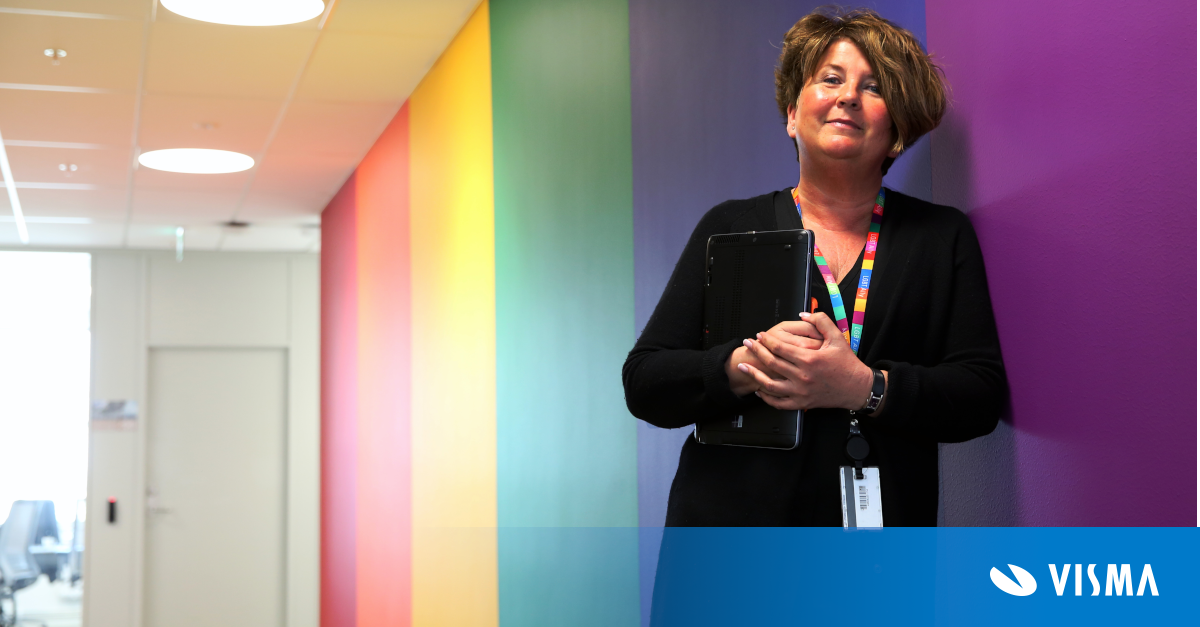Sustainable Computing at Visma Connect
Visma Connect’s vision is to build a sustainable society through information technology. Having a vision is one thing, but achieving it is another. As a technology company, we are well aware that our work has a direct impact on the environment. Our core business involves a lot of computing power. We process millions of messages per month, enabling governments and businesses to exchange data securely and reliably with each other.
In this blog
- Computing power has an ecological impact
- Cloud utilisation facts
- Dynamic capacity allocation for the greenest outcome
- Dynamic allocation with serverless computing
- Identifying energy sources per country using an API
- Pilot results
- Green computing and the future
Visma Loginex and Visma Sustynex are specifically designed to facilitate the creation and sharing of trusted sustainability reports. But how sustainable are our systems? Can we practise what we preach? This question came up during one of our engineering team’s innovation sprints. They came up with a practical solution for sustainable computing that many companies can learn from.
Computing power has an ecological impact
According to MIT research, cloud computing now has a greater carbon footprint than the airline industry. “A single data centre can consume the equivalent electricity of 50,000 homes.” Collectively, data centres consume more energy than some nation states. Where does this energy go? A good part of it goes into cooling. But for the most part, it goes into maintaining built-in redundancy. To prevent service disruptions, a lot of energy is allocated to back-up generators and servers that need to be ready for allocation should others fail. In some cases, only 6 to 12% of energy consumed is devoted to active computational processes.
We decided to investigate our own utilisation numbers.
Cloud utilisation facts
We started by analysing our website and found that it didn’t run on renewable energy. We host our web properties on a public cloud provider, which has data centres around the world. Some data centres run in countries that have a greener energy mix than others. This led us to consider how sustainable our software products are in terms of hosting.
Upon further analysis, we found that one of the endpoints (servers) we use for our Machine Learning solution was idle 99.8% of the time. We asked ourselves: can we configure our endpoints in such a way that they will only be active when needed and running on the greenest data centres?
Dynamic capacity allocation for the greenest outcome
Decades ago, it would have been very difficult to dynamically spin up or spin down capacity, or allocate capacity to different servers. Applications were mainly run in a monolithic way. Today, thanks to containerization, it’s a lot easier to do this.
Containers
Container technologies like Docker have revolutionised the way software is deployed and run. Containerization makes it possible to lift and shift applications from one datacenter to another without any problems. With that in mind, we realised it might be possible to dynamically allocate server capacity for our products in the greenest data centres.
Dynamic allocation with serverless computing
Serverless inference builds on top of containerization technology. What’s happening under the hood is that a Docker image is started the moment a call comes in.
For instance, we currently host our Machine Learning models as Sagemaker endpoints. This means that the endpoint is up 24/7, but it’s only used a small percentage of the time. Using serverless inference we could turn that around big time. Rather than having an endpoint running all of the time, it can be spun up the moment it’s needed in the greenest data centres. Then it will perform its task and can be decommissioned again.
Of course, spinning up the inference endpoint takes more time if it has a cold start. Depending on the use case this can be an issue. If your system doesn’t need to react in real time, waiting for a few seconds may be ok.
Our engineering team decided to try this out as a pilot for systems that wouldn’t suffer from slower execution due to cold starts. The only remaining question was identifying the greenest data centres to run on.
Supply Chain Sustainability is a Matter of Persistence
 Large scale events like the pandemic and the war in Ukraine have exposed the vulnerability of global supply chains. Even small incidents like the Suez canal blockage can have many ripple effects. This goes to show how complex supply chains really are. At the same time, pressure is mounting to mitigate their sustainability impact. We have all heard about the problem: from the large scale transport of animal feed between South America and Europe to the consequences of fast fashion. The big question is: how can business leaders make conscious choices to embrace sustainability in such a complex landscape? We spoke with Professor Julia Hartmann to address this question. Read the full conversation here →
Large scale events like the pandemic and the war in Ukraine have exposed the vulnerability of global supply chains. Even small incidents like the Suez canal blockage can have many ripple effects. This goes to show how complex supply chains really are. At the same time, pressure is mounting to mitigate their sustainability impact. We have all heard about the problem: from the large scale transport of animal feed between South America and Europe to the consequences of fast fashion. The big question is: how can business leaders make conscious choices to embrace sustainability in such a complex landscape? We spoke with Professor Julia Hartmann to address this question. Read the full conversation here →
Identifying energy sources per country using an API
To determine which data centres run on the greenest energy, we use a tool which maps out the energy sources per country. The choice between a datacenter located in a country that runs primarily on hydro power or coal makes a huge difference in terms of carbon intensity. But we knew we had to look further. The weather can have a big impact on other renewables, like wind and solar.
Say the region we’re running our endpoint on relies heavily on wind power, but there’s no wind on a certain day. The API allows us to get rich data and even see the effects of the weather in terms of energy production, down to a specific time of day. This allows us to optimise where we run our workload. If there’s plenty of wind in a certain country, we can run our workloads there, or find an alternative if the opposite is true.
Pilot results
The results of our pilot were very promising. We could lower our cloud carbon footprint for these systems by 99% and even achieve a cost reduction of over 1,000 EUR per year.
Green computing and the future
We think this approach is very promising for the future of green infrastructure. Initiatives like the green new deal will require “all-hands-on-deck.” Every industry needs to transition to more eco-friendly operating models. We are pleased to see that mechanisms for accountability in the tech industry, like the recent Climate Neutral Data Centre Pact, are emerging and are proud to do our part.
Stay tuned for more blogs! We will keep you updated about our own journey towards sustainability.



